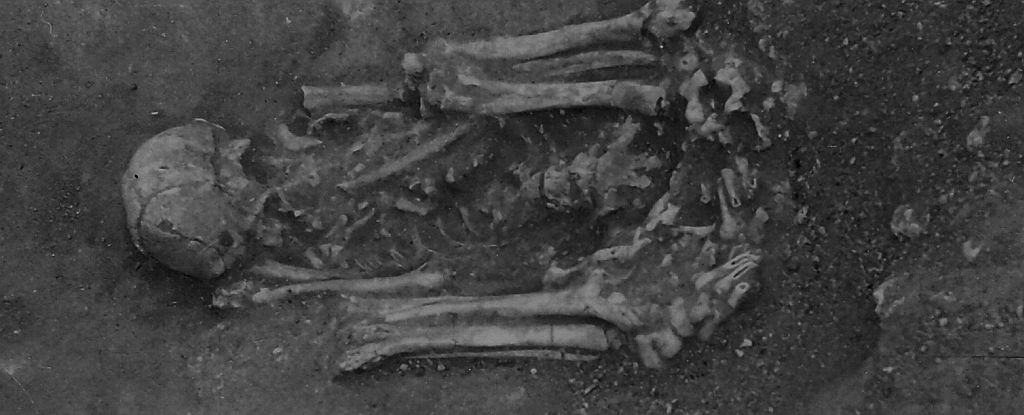Products You May Like
Archaeologists may have just uncovered evidence for the oldest known practice of mummification.
Human remains interred 8,000 years ago in the Sado Valley in Portugal, during the Mesolithic, appear to have been deliberately treated for mummification prior to burial. This is the first evidence for Mesolithic mummification in Europe.
It’s also possibly the oldest in the world. Previously, the earliest evidence we had for deliberate mummification was dated to 7,000 years ago, to the Chinchorro mummies found in the Atacama desert in Chile.
In Egypt, famous for its ancient burial customs, the earliest evidence we have for deliberate mummification is from 5,600 years ago.
“Our study combines archaeothanatological analysis with insights from experimental taphonomic research, thus adding a new dimension to our understanding of Mesolithic mortuary practices,” wrote a team of of researchers led by archaeologist Rita Peyroteo-Stjerna of Uppsala University in Sweden.
“Here we present what we believe to be evidence for intentional mummification and reflect on attitudes to the body and the handling of the dead, including their transport to significant places in the landscape.”
Archaeologists and anthropologists believe that mummification may not have been uncommon in prehistoric eras, but evidence for it is a bit hard to come by. Soft tissue, no matter how well mummified, tends to degrade over time. Even the Chinchorro mummies are now decomposing.
The Sado Valley remains, uncovered in the early 1960s, have very little soft tissue at all. Although obviously deliberately placed, the burials had been considered pretty straightforward. The remains were disinterred and removed to the National Museum of Archaeology in Portugal, along with sketches and some rather poor quality photographs of the site, which limited follow-up study.
Recently, however, following the death of archaeologist Manuel Farinha dos Santos, three rolls of film were recovered from his personal effects. Although Farinha dos Santos had not attended the excavations, he had done some work for the museum, and Peyroteo-Stjerna and her team were able to connect the film rolls to excavations carried out in Poças de S. Bento in 1960 and Arapouco in 1962.
The images captured therein were of exceptional quality, and allowed the research team to conduct a more in-depth archaeothanatological analysis than had been possible previously; that’s the multi-disciplinary archaeological study of ancient funerary practices.
With images of the remains in situ, the archaeologists were able to reconstruct, in better detail, how the remains had been handled prior to their burial.
In addition, forensic anthropologist Hayley Mickleburgh conducted human decomposition experiments at the the Forensic Anthropology Research Facility at Texas State University.
This allowed the team to better understand how human corpses decompose in different positions when they have been mummified and when they have not. (Be warned: if you go read the paper, there are photographs of these experiments.)
The results of these experiments could then be compared to images of the Sado Valley remains; and, fascinatingly, even without soft tissue, the remains of one individual showed signs of being mummified. These include hyperflexed limbs, an absence of disarticulation, and rapid sediment infill around the bones.
That’s because decomposing bodies disarticulate at weak joints relatively quickly; mummification preserves articulation, as well as strong flexion. Soil filling in the space around the remains would have kept the bones in place.
“For hyperflexed positions to be present in a burial with preserved labile joint connections in unstable positions, the body must have been initially buried in this hyperflexed position,” the researchers wrote. “The combination of hyperflexion throughout the body with a lack of disarticulation or evidence of in situ bone movement, as observed in Arapouco 1962, unknown 3, is therefore a strong taphonomic indicator of burial in a mummified condition.”
The results, the researchers believe, suggest that deliberate mummification may have been more widespread globally than we previously understood, and that their findings should inform how archaeological excavations are conducted in the future.
By allowing for the possibility of mummification when excavating very ancient remains, we could gain more evidence for it, and expand our understanding of how our ancestors cared for their dead.
The research has been published in the European Journal of Archaeology.
